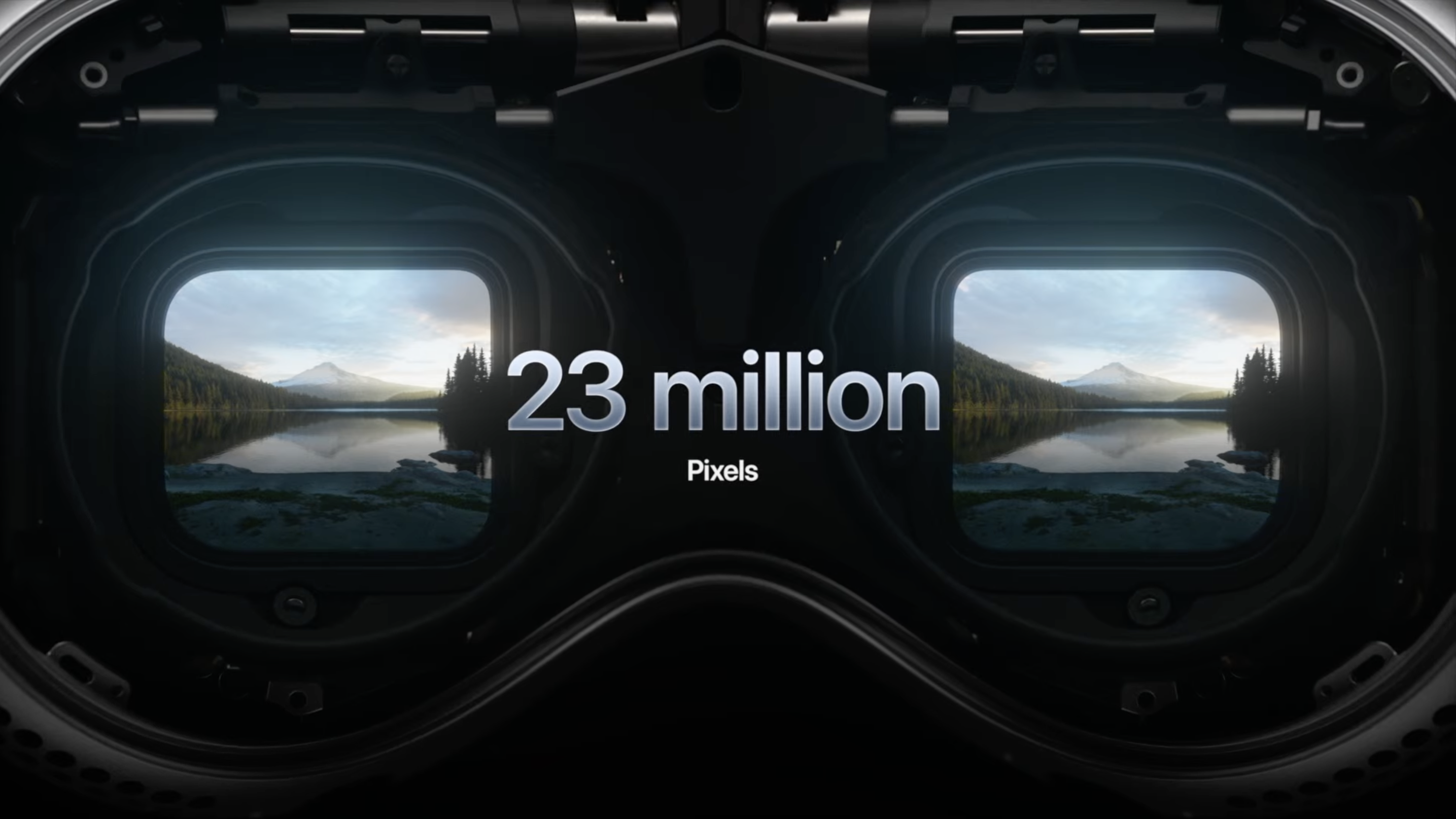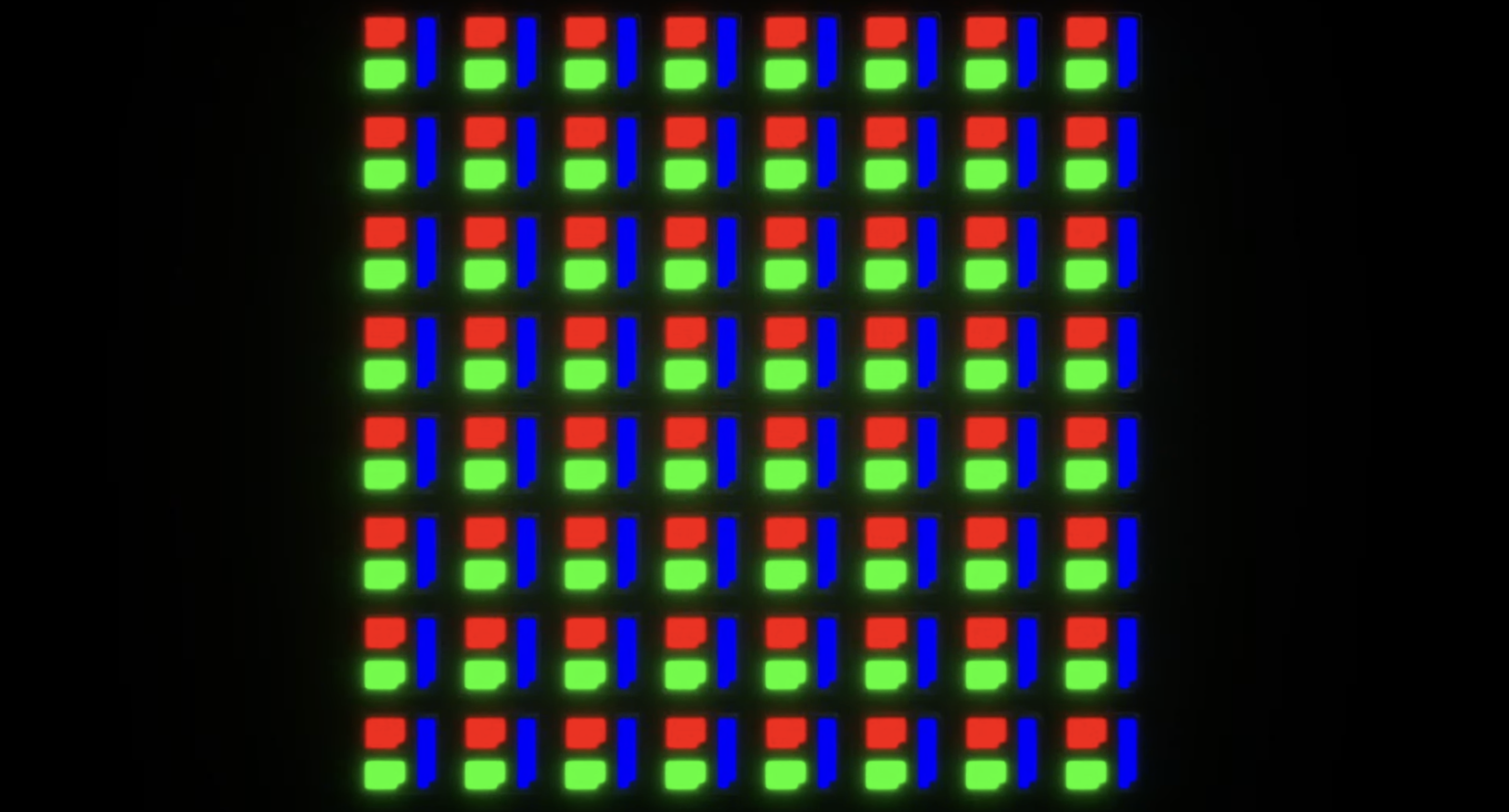What is micro-OLED? Apple Vision Pro's next-gen screen tech explained

When Apple announced the Apple Vision Pro headset, one of the features it made a big deal about is how detailed the screens are, delivering more pixels than are in one of the best 4K TVs to each eye. In our hands-on Apple Vision Pro review, we said that "Imagery in general is fantastic," and that combining the high-quality external cameras with the super-detailed screen meant that "instead of a grainy or limited view of the outside world, it looked almost as if I was peering through clear glass."
What you may have missed in the Vision Pro announcement is how the headset achieves this: a cutting-edge screen technology called "micro-OLED". As the name implies, this is similar to the tech used in the OLED screens you'll find on the likes of the iPhone 14 Pro or Samsung Galaxy S23 Ultra… but, well, smaller. Actually, that's underplaying it, because it's a lot smaller, and that's not the only advantage it has.
Micro-OLED isn't unique to the Vision Pro, and you'll hear a lot more about it in the coming years, so let's get into what makes it so special, and what kind of devices are likely to benefit from it.
1. Packing in the pixels
The headline feature of micro-OLED is that it's incredibly detailed. It's not just a step beyond what you get in phones, it's a running leap beyond it. The OLED screens you get on phones tend to reach a maximum of around 500 pixels per inch – which means, in every inch of the screen you measure, you would find 500 individual dots of light making up the image.
Micro-OLED screens have been made that vary from 2,600 to 10,000 pixels per inch, and the potential for screens of up to 28,000 pixels per inch has been demonstrated.
Apple says that its micro-OLED display in the Vision Pro packs 64 pixels into the same space used by a single pixel in the iPhone. If we assume Apple is referring to the iPhone 14 Pro Max and its 460 pixels per inch (ppi) screen, that would give us a pixel density of 3,680 ppi in the Vision Pro.
(If you want to nerd out, I estimate the resolution per eye of the Vision Pro as being 3201 x 3606, meaning a total of 11.54 million pixels per screen. This is based on the pixel density above and Apple saying that the screens are the size of a postage stamp, which is 0.87 x 0.98 inches. The figures line up with Apple saying that there are 23 million pixels in total.)
Sign up for breaking news, reviews, opinion, top tech deals, and more.
You can see why this is so important for convincing virtual reality or augmented reality – your eye can't see that it's looking at individual pixels, and you just see things as being "real". You avoid the "screen door" effect older VR headsets have, where you can see the gaps between the pixels on other screens, so it feels like you're looking through a grid, detaching you from the reality of what you're seeing.
So that's micro-OLED's chief trick for VR – so real, you can't tell it's virtual.
This pixel density is also why micro-OLED is exciting for wearables too – imagine a screen in the Apple Watch 9 that's so highly detailed, you couldn't make out the difference compared to a real watch face.

2. Big brightness
The other interesting element of micro-OLED screens is that they can go much brighter than regular OLED screens. Screen brightness is measured in "nits", and the OLED displays in high-end iPhones and Samsung phones can reach high peak brightness levels of 1,200 to 1,600 nits, but only for a very short amount of time. Their maximum typical brightness for prolonged use is around 600 nits.
Micro-OLED displays have been demonstrated as reaching 3,000 to 15,000 nits. Apple hasn't said what the maximum brightness of its Vision Pro screens is, but the rumors claimed it to be 5,000 nits. We'll assume that's a peak brightness again, sustainable for only a short time – but it may mean that the sustained brightness level can be over 1,000 nits, so still a massive improvement.
Do you need a super-bright screen right next to your face if you're blocking off all the light around you? Well, maybe, if you want to do mixed reality correctly. For reference, it's often said that the ambient light of a clear, sunny day is up to 10,000 nits, so if a headset wants to show you a mixed-reality view that looks just like the real world, it needs to be able to come close to the brightness of the real world.
Of course, for a lot of us, when we're out on a sunny day, we actually wear sunglasses to lower the brightness, so it's fine if a micro-OLED screen isn't as bright as the real thing. It's probably more like how we'd prefer to see things.
Either way, micro-OLED is much better at recreating the dynamic range of the real world. That's partly because of entry three in our explainer…
3. OLED's true black tones
The reason OLED is such a premium and much-wanted screen tech – from how popular the best OLED TVs are, to how we all expect it to be the tech on any good phone – is its precision. Each OLED pixel generates and controls its own light, which not only means you get super-crisp color definition, but you also get perfect contrast.
Each pixel can dim itself or turn itself off completely, to show true black tones, unlike LCD screens, which tend to show "deep gray" instead of black. And micro-OLED can do this too, so much like how the extra brightness helps to make things look more realistic to your eyes, so does its ability to show true "darkness".
4. What else will use micro-OLED?
Apple is not the first to show off a micro-OLED headset, but this will be the biggest push for the tech so far, no question.
It's already appeared in some VR headsets, including the Megane X and the Arpara headset. They're not exactly household names.
The most interesting use of it so far is TCL's Nxtwear G and Nxtwear S, which function as just a portable display, effectively – plug them into your phone or Steam Deck for a big screen in front of your eyes. The Nxtwear G is only a HD screen in a much simpler kind of device, but it's also more than 90% cheaper than the Apple Vision Pro. TCL also makes a VR headset with micro-OLED in that may come out in the future.
So, screens that go close to the eyes is the main draw for micro-OLED, and we're already mentioned that they can be great for the best smartwatches too. Their high brightness means they're very visible outdoors, so you may find the tech on anything where a small screen that can be seen even in bright sunlight is useful.
However, don't expect to see this tech come to larger screens. Finding micro-OLED on the best phones is unlikely, but getting it on the best TVs is right out. It's just not necessary for either – when you're viewing these at standard distances, you can't make out the individual pixels anyway. We don't need higher-density screens for them, and micro-OLED costs a lot more than an OLED screen of the same size. And beyond that, they're not being made at sizes beyond a square inch or two currently.
So it's very much a tech for the best VR headsets and maybe some wearables for now – but it's really going to elevate those.

Matt is TechRadar's Managing Editor for Entertainment, meaning he's in charge of persuading our team of writers and reviewers to watch the latest TV shows and movies on gorgeous TVs and listen to fantastic speakers and headphones. It's a tough task, as you can imagine. Matt has over a decade of experience in tech publishing, and previously ran the TV & audio coverage for our colleagues at T3.com, and before that he edited T3 magazine. During his career, he's also contributed to places as varied as Creative Bloq, PC Gamer, PetsRadar, MacLife, and Edge. TV and movie nerdism is his speciality, and he goes to the cinema three times a week. He's always happy to explain the virtues of Dolby Vision over a drink, but he might need to use props, like he's explaining the offside rule.